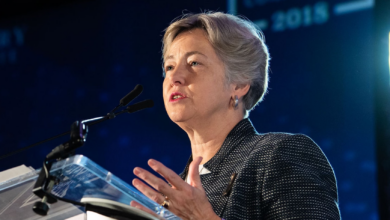
Education Should Be Bigger, and Gayer, in Texas
By Josh Inocéncio
On July 14, the California State Board of Education voted unanimously to include LGBT history curricula in public schools. As early as elementary school, California students will learn about the contributions of major LGBT figures, such as Harvey Milk, and gay rights organizations, such as Mattachine, in the United States. With this sweeping approval, California is leaping toward a more inclusive educational approach that not only informs students on integral moments in the nation’s civil rights history, but also uplifts LGBT students who rarely see themselves represented in public school settings.
In the wake of the historic vote, Equality California, a statewide LGBT advocacy group, released a statement affirming this new inclusion for overall well being of LGBT students:
LGBT students are frequent targets of bullying and harassment, leading to lower graduation rates, depression, and a suicide attempt rate up to four times higher than their non-LGBT peers. And by seeing themselves reflected in lessons and materials, students’ experiences are validated and their sense of self-worth reinforced, creating the opportunity for students to be able to achieve academically.
As someone who went through Texas’ public schools, I know LGBT topics in social studies courses are generally nil (although there are exceptions with progressive teachers across the state). In fact, many teachers avoided LGBT history because they considered such material too politically divisive for classrooms. History teachers didn’t engage conversations on the Stonewall riot, and while English teachers may have assigned queer writers such as Tennessee Williams, we did not discuss their work in relationship to sexuality. By not validating LGBT rights movements as a significant part of U.S. history, it’s easy to see why LGBT students (along with other marginalized groups that aren’t appropriately represented in textbooks) do not have a strong sense of their political and historical self-worth.
For Texas, a state that is demographically comparable to California, the inclusion of LGBT materials in public schools is imperative. After the Golden State, Texas has the second largest population of gays and lesbians as well as the second largest population of transgender people in the country. Rather than designating LGBT history as fringe, public schools need to incorporate key achievements into social studies syllabi.
The relevance for an LGBT curriculum in social studies courses lies within the numbers and the increasing visibility for LGBT youth in Texas. But to follow California’s lead, Texas voters will need to root out the right-wing politicians that make education decisions. Even now, Momentum Instruction, a textbook company, has hoisted Texas into the national spotlight (again) in regard to education by publishing a divisive and factually incorrect textbook on Mexican-American studies. We desperately need education reform and appropriately informed people in power to effectively change the status quo. Without this, LGBT history curricula will meet dead ends in Texas.
But as a former educator myself, I have seen firsthand the realities of discussing LGBT topics in the classroom. For two years as a graduate teaching assistant at Florida State University, I led facilitations in an introductory theater course for non-majors. The syllabus, designed by Dr. Elizabeth Osborne, included two LGBT plays by U.S. playwrights: M. Butterfly by David Henry Hwang and Angels in America by Tony Kushner. Hwang’s play confronts colonial conceptions of gender through a French diplomat’s love affair with a Chinese man whom he believes is a female singer in Beijing. Kushner’s play explores the AIDS crisis and religious homophobia in New York City. Both plays were bold choices for an introductory course that consistently challenged students’ expectations about what is canonical and how to broach history related to LGBT people.
Many of my students were freshmen that came from conservative backgrounds in Florida, Georgia, Alabama, among other southern states. However, their upbringing, whether conservative or liberal or religious or not, didn’t deter them from actively engaging with the material; in fact, many were passionately outraged as they learned about historic injustices that they hadn’t previously known. The classroom became a forum for students to learn about LGBT history through theater and performance, and then openly discuss how to improve society by battling stigmas and listening to marginalized groups. Regardless of backgrounds or political views, the students were responsive and they learned valuable information about U.S. history.
But that was college where (despite some protests from students offended by classroom materials) you generally expect to be challenged. These discussions, particularly about the AIDS crisis and ensuing political movements, need to begin much earlier. Not to mention, Supreme Court cases have shaped the LGBT movement over the last two decades. The accomplishments of LGBT Americans isn’t mere fodder for culture wars that PTA members or right-wing politicians can discard, but history that’s just as valid as the contributions of other civil rights movements.










